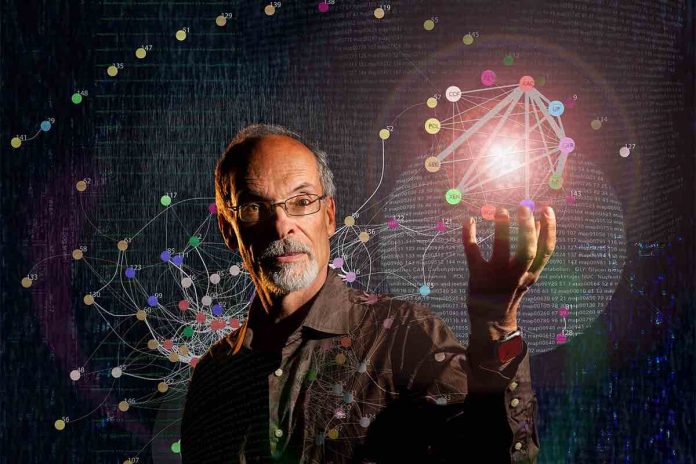If evolution selects for the fittest organisms, why do we still have imperfections? Scientists at the Milner Centre for Evolution at the University of Bath investigating this question have found that in species with small populations, chance events take precedence over natural selection, allowing imperfections to creep in.
Recent work by Alex Ho and Laurence Hurst from the Milner Centre for Evolution at the University of Bath analysed the genomes of a wide range of organisms, from mammals to single-celled algae. They compared the genetic instructions used by cells to make proteins – specifically the code at the end of the gene that tells the cell to stop reading, called stop codons.
When making proteins, our DNA is read out in strings, with a stop codon at the end of a string to tell the cell to stop reading. In any given gene, most organisms have a choice of using one of three very similar stop codons, however, one of them (so called TAA) is much better than the others (called TGA and TAG) at making the cell machinery stop.
The researchers, publishing in Molecular Biology and Evolution, looked at why some genes use the less efficient stop codons, when evolution by natural selection should cause most genes to use the more efficient TAA codon.
They found that in species such as humans and other mammals, where populations are relatively small and reproduction is slow, selection favoured TAA in the most highly expressed genes. However mutations creating the less effective stop codons could increase in frequency because of chance events, the roll of the dice being more influential when populations are small. This results in a less efficient stop codon being found more often than would be expected, mostly in the less commonly used genes.
In contrast, in species with large, fast replicating populations, such as yeast or bacteria, chance is less important and so natural selection tended to “weed out” any less favourable mutations, resulting in TAA being very common.
The findings could help the design of new gene therapies for genetic diseases.
Professor Laurence Hurst, Director of the Milner Centre for Evolution, said: “Our total set of DNA seems very much more complicated than that of something like yeast. Humans have lots of enigmatic DNA between our genes and each of our genes can typically make many different products, whereas yeast genes tend to make just one.
“Our work shows that natural selection in humans is not very efficient and so our DNA ends up similar to an ancient rusting motor car – just able to function, with all sorts of bad repairs and accretions built up over time. Yeast instead is more like an organism straight out of the showroom: the perfect machine.”
Their results indicate that organisms, such as humans and other mammals, with relatively small population sizes, cannot sustain a perfect state over evolutionary time. It also supports the view that human DNA is error prone and poor quality, not as part of some complex machine for a complex organism, but instead because selection is too weak a force to stop our DNA from deteriorating.
Professor Hurst said: “These results matter because they help us understand that just because something is common, it doesn’t mean it is the best. This helps both the understanding of, and therapeutics for, genetic diseases.
“For example, it suggests when making new genes for gene therapy, we should do what yeast do and use the best stop codon: TAA.”




